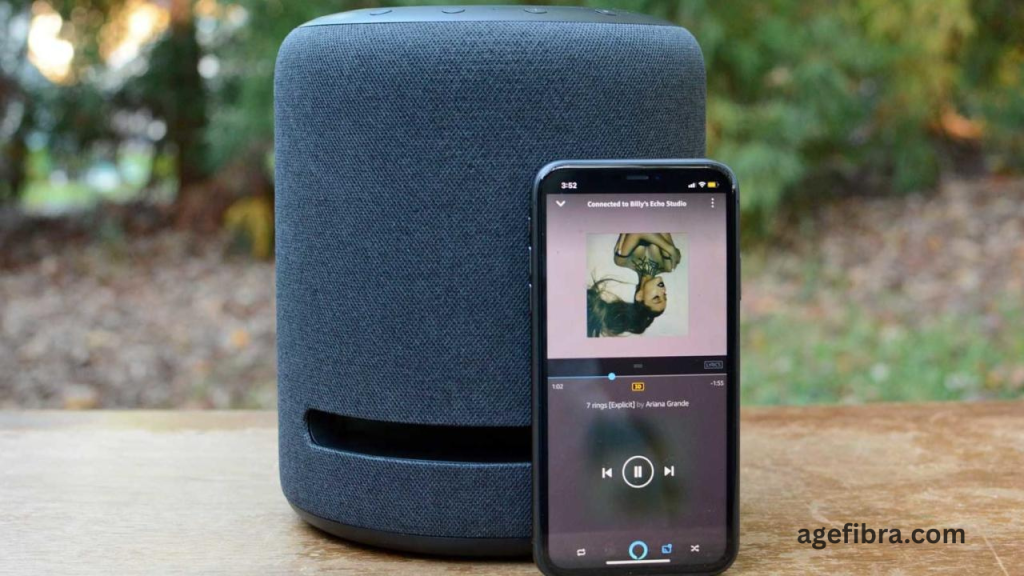In today’s smart homes, a smart speaker for music goes beyond simple voice control. It’s about experiencing rich, room-filling sound that enhances every moment, whether you’re hosting friends, exercising, or unwinding after a long day. The right speaker doesn’t just play music; it brings emotion, clarity, and immersive audio that transforms your environment into a personal soundstage.
Finding the best smart speaker for music isn’t just about price or brand recognition. Factors like sound engineering, streaming support, voice assistant compatibility, and audio responsiveness in various room sizes all play a vital role. As more high-quality options enter the market, understanding what sets each speaker apart is essential. This guide covers the top-performing speakers, breaks down the key features that matter most to music lovers, and helps you choose a device that delivers both intelligence and exceptional sound.
What Makes a Smart Speaker Ideal for Music?
When evaluating a smart speaker for music, several elements contribute to how it sounds and performs in a real environment:
Audio Hardware That Delivers
A high-quality speaker should feature full-range drivers, subwoofers, and powerful amplifiers. These components allow the speaker to produce deep bass, clear mids, and crisp highs, providing a full-spectrum sound experience. Dolby Atmos or 360-degree audio capabilities are also a plus for immersive listening.
Smart Assistant Integration
Voice assistants like Alexa, Google Assistant, or Siri make interacting with the speaker intuitive. Users can request playlists, adjust volume, or switch genres using simple commands. Smart assistant features enhance user convenience without compromising sound quality.
Connectivity and Compatibility
Whether you’re streaming via Spotify, Apple Music, Amazon Music, or YouTube Music, seamless integration with these services is essential. Also, compatibility with Wi-Fi, Bluetooth, and multi-room audio setups ensures flexibility for various listening environments.
Top Smart Speakers for Music with Superior Sound Quality
Here’s a look at standout smart speakers known for delivering rich audio and intelligent functionality:
Apple HomePod (2nd Gen)
Apple’s HomePod (2nd Gen) stands out with its computational audio and deep integration with the Apple ecosystem. It features a high-excursion woofer and five tweeters to provide rich spatial audio.
- Works seamlessly with Apple Music and AirPlay 2
- Offers Siri-based controls
- Adapts sound in real time using room sensing technology.
Amazon Echo Studio
For those who want Alexa-powered sound with premium audio, the Echo Studio impresses. It’s Amazon’s high-end smart speaker that brings Dolby Atmos and 3D audio into your living room.
- 5-speaker design for expansive sound
- Automatic room adaptation
- Native support for Amazon Music HD
Sonos Era 300
The Sonos Era 300 is designed for music lovers seeking studio-level sound. It supports spatial audio and is compatible with multiple voice assistants.
- Spatial audio with Dolby Atmos
- Excellent stereo separation
- Apple AirPlay 2 and Alexa support
Google Nest Audio
Google Nest Audio is a compact yet capable speaker with a strong emphasis on vocal clarity and midrange sound. It’s a great choice for casual listeners in smaller spaces.
- Great for voice-rich content and light music
- Syncs easily with Google services
- Affordable yet efficient
Step-by-Step Guide to Setting Up Your Smart Speaker for Best Music Performance
To make the most of your smart speaker for music, setup and placement matter. Follow these steps to optimize your experience:
Choose the Right Location
Position the speaker away from walls and corners to reduce bass distortion. Ideally, place it at ear level and avoid blocking the speaker’s drivers with furniture or objects.
Connect to a Stable Network
Ensure your Wi-Fi is strong and consistent. Music streaming requires a steady connection, especially for high-resolution audio formats like FLAC or Dolby Atmos.
Configure Voice Assistant Settings
Whether you’re using Alexa, Siri, or Google Assistant, link your favorite music services, set default apps, and create voice commands for playlists or routines.
Enable Audio Enhancements
Explore your speaker’s settings for sound tuning features. Some models, like the Echo Studio or HomePod, adjust automatically. Others may allow manual tweaks via companion apps.
Integrate with Smart Home Devices
If your speaker supports smart home control, connect it with lights or appliances to create music-responsive environments or automation scenes.
Read More: Do Too Many Devices Crash or Slow Wi-Fi Router?
Tips for Getting the Best Music Quality from a Smart Speaker
Stream in High Quality for Richer Audio
Always use the highest available streaming quality from your chosen music service. Platforms like Amazon Music HD, Tidal, and Apple Music offer lossless and high-resolution audio, which ensures that every detail, instrument, and vocal nuance is heard exactly as intended by the artist.
Keep Your Speaker Firmware Up to Date
Manufacturers frequently release updates that improve sound performance, connectivity, and compatibility with new features. Regularly checking and updating your smart speaker’s firmware can unlock better audio algorithms and improve long-term functionality.
Enhance Sound with Stereo Pairing
For users who want room-filling audio or more immersive sound, pairing two compatible smart speakers can create a true stereo experience. This setup enhances left-right channel separation and delivers a more dynamic and spatial listening environment, ideal for large rooms or critical listening.
Choose a Stable, Vibration-Free Surface
The surface your speaker rests on affects how sound travels. Avoid placing your speaker on shaky, uneven, or resonant surfaces. A stable, solid shelf or table ensures that bass tones remain tight and that overall sound clarity isn’t muddied by unnecessary vibrations.
Common Mistakes to Avoid with Music-Focused Smart Speakers
Placing the Speaker Too Close to the Walls
Many users mistakenly position their speaker against a wall or in a corner. While it may amplify bass, it often leads to boomy, unbalanced sound. Allowing some space around the speaker helps maintain a natural, clean audio profile.
Relying Solely on Bluetooth Streaming
Bluetooth is convenient but typically compresses audio, reducing sound quality. When possible, stream via Wi-Fi, AirPlay, or Chromecast for better fidelity and uninterrupted playback, especially for high-resolution tracks.
Ignoring the Companion App Features
Smart speaker apps are more than setup tools — they offer EQ controls, firmware updates, and device syncing options. Skipping these settings could mean missing out on features that enhance your listening experience and audio control.
Using an Inconsistent Power Source
Plugging your speaker into a fluctuating power outlet or relying on low-quality adapters can cause performance issues over time. Use a stable and direct power connection to ensure consistent sound output and avoid potential shutdowns or audio drops.
Real-Life Use Cases of Smart Speakers for Music
Morning Motivation
Wake up to energizing playlists with voice-activated routines. Say, “Play upbeat music,” and let your smart speaker turn on lights and queue your favorite mix.
Dinner Parties
Enhance ambiance with genre-based playlists. Ask your speaker to play jazz or classical background music while hosting.
Workout Sessions
Use your speaker to blast pump-up music while tracking your session through a connected fitness app or wearable.
Wind Down Evenings
Wind down with meditation tracks or soft acoustic tunes triggered through a simple voice command like “Play relaxing music.”
Frequently Asked Questions
Can a smart speaker replace a traditional Hi-Fi system?
Not entirely, but high-end models like Sonos Era 300 or Echo Studio come close in quality and convenience, especially for casual listeners.
Does the room size affect the smart speaker’s sound?
Yes, larger rooms require more powerful speakers or multiple units for balanced sound coverage.
Which music service works best with smart speakers?
It depends on your speaker. Apple Music works best with HomePod, Amazon Music with Echo, and Spotify is versatile across devices.
Is stereo pairing necessary for music listening?
Stereo pairing isn’t essential, but it enhances spatial sound and is recommended for larger spaces or immersive experiences.
Can I use multiple smart speakers for whole-home audio?
Yes, most smart speakers support multi-room setups for synchronized playback across different rooms.
Do smart speakers support offline music?
Typically no. Smart speakers require an internet connection to stream music, though some support Bluetooth playback from a device with downloaded songs.
How do I improve bass without distorting vocals?
Adjust the EQ via the speaker’s app. Some smart speakers let you boost bass without muddying the mids and highs.
Conclusion
Choosing the right smart speaker for music transforms your daily routine into a richer, more immersive sound experience. Whether it’s deep bass, crisp vocals, or spatial audio you crave, there’s a perfect match for your needs. Prioritize quality, set up wisely, and explore voice control to make the most of your investment. With the right speaker, your music doesn’t just play — it comes to life in every corner of your space.


